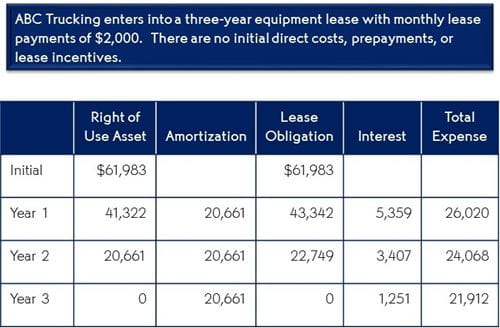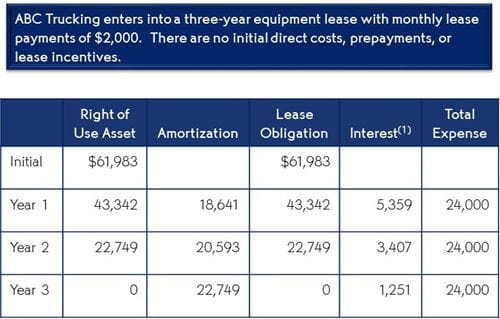The new leasing accounting standard (ASC 842) and how it may affect your valuation

"One of my great ambitions before I die is to fly in an aircraft that is on an airline’s balance sheet.”
— Sir David Tweedie, Former Chairman of the IASB, April 25, 2008
This iconic statement referred to the large numbers of aircraft leased by airline companies. At the time of the statement, IASB estimated that 85% of leases globally were not recognized on balance sheets, something new accounting standards released by IASB and FASB in early 2016 aim to remedy.
The new FASB standard (ASC 842) has effective dates of 2019 for public companies and 2022 for private companies (see sidebar) and contains changes that will ripple through your organization and may affect your valuation. The primary change is to recognize a right-of-use asset and lease obligation for operating leases.
A few items, however, are not changing. Lease accounting from the lessor’s perspective, for instance, remains fairly unchanged, with real-estate-specific provisions and leveraged leases eliminated.
The definition of a lease also remains fairly unchanged but was clarified by the new standard. There are still two types of leases—operating and finance (formerly known as capital). Expense recognition of leases also should be similar. For an operating lease, all payments over the lease term are expensed on a straight-line basis over that lease term; for a finance lease, asset amortization and interest expense are recognized, similar to a capital lease today.
But many other items are changing—more than 400 pages worth. Your appraiser will need to understand how the new lease accounting standard affects your balance sheet in terms of long-term assets, short- and long-term liabilities, and the effects on EBITDA and cash flow to properly value your company.
Changes Ahead
ASC 842 significantly changes the accounting for lessees. All leases (including operating leases) with a lease term greater than 12 months will need to be recognized on the balance sheet as an asset and a liability. Furthermore, the bright-line finance (capital) lease tests are now removed.
Other key changes to pay special attention to include:
- Non-lease components are separated from the lease unless a practical expedient is elected (lessees only).
- The new standard changes profit recognition for sale-leaseback transactions.
- Related-party leases are accounted for based on the contractual terms (not the substance) of the lease.
- There are new disclosure requirements to further increase transparency.
- Consideration will need to be given to the inclusion or exclusion of renewal periods in determining the amount recorded.
When it comes to lease classification, the standard now makes the criteria principles based and adds a new fifth criterion from the previous four, intended to be applied in rare circumstances.
Here’s how classification lines up under ASU 842. If any of the following criteria apply, then it is classified as a finance lease; otherwise, it’s classified as an operating lease:
- The lease transfers ownership of the underlying asset to the lessee by the end of the lease term.
- The lease grants the lessee an option to purchase the underlying asset that the lessee is reasonably certain to exercise.
- The lease term is for the major part of the remaining economic life of the underlying asset (unless the commencement date falls at or near the end of the economic life of the underlying asset).
- The present value of the sum of the lease payments and any residual value guaranteed by the lessee that isn’t already reflected in the lease payments equal or exceed substantially all of the fair value of the underlying asset.
- The underlying asset is of such a specialized nature that it’s expected to have no alternative use to the lessor at the end of the lease term.
For the present-value calculation, lessees will also need to identify appropriate discount rates for most leases. The discount rate used should be the implicit rate in the lease whenever that is available and can be readily determined. Otherwise, the lessee should use its incremental borrowing rate.
A lessee that is not a public business entity, however, can make an accounting policy election to use a risk-free discount rate for all leases. Using the lower rate can increase the likelihood that a lease is considered a finance lease.
When including the finance lease as part of a financial statement presentation, it’s important to keep the following factors in mind:
For balance sheet treatment:
- Right-of-use asset is long term.
- Lease obligation is both current and long term.
- Operating/finance lease amounts are presented/disclosed separately.
For income statement treatment:
- Finance lease amortization and interest are added back in determining EBITDA.
- Operating lease expense typically is not.
For lease obligations:
- Finance lease obligation is classified as debt.
- Operating lease obligation is classified as an other liability.
Here are two examples—one a finance lease and the other an operating lease—that illustrate how the new standard would be applied.
Finance Lease Example

Operating Lease Example

(1) Interest and amortization numbers are shown for information but are not separately recognized in the income statement. The total is recognized as “lease” expense.
Consider All the Implications
In addition to getting your appraiser on the same page with how the standard can affect your valuation, your underwriting and credit analysis also may need to be revised. Organizations that have a substantial increase in reported liabilities could experience cost increases or difficulty financing future capital asset acquisitions.
In addition, financial covenants may need to be adjusted as a result of the impact of different lease types on earnings before interest, taxes, depreciation, and amortization (EBITDA) and because the liabilities associated with long-term assets will now be both current and long term.
Companies may try to structure some related-party transactions; however, they still have to look at the contractual lease terms (e.g., renewal options reasonably certain to be exercised) and consider leasehold improvement amortization.



